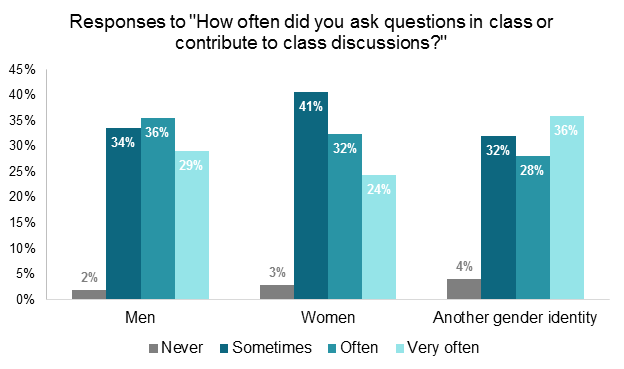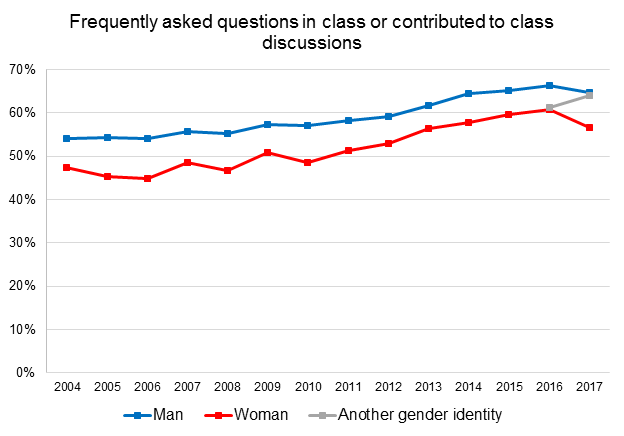The law school classroom is a hotspot of student engagement. Historically, classroom observations and self-report data have shown that male voices tend to be heard more often than female voices in the law school classroom. How do U.S. law students rate the frequency of their own participation? The Law School Survey of Student Engagement asks students to report how often they asked questions in class or contributed to class discussions in the most recent school year, using the options “never,” “sometimes,” “often,” or “very often.” We found that in 2017, frequent class participation was indeed higher among male students than female students.1

Combining the students who participate “often” and “very often,” we see that this gender gap has existed every year that LSSSE was administered, going back to the inaugural survey in 2004.

Interestingly, although the overall percentage of respondents who frequently participate in class has fluctuated over the years, the gap between male and female participation has stayed fairly constant. LSSSE added a third gender option in 2016, which means that future data sets will give us a more nuanced understanding of the law school experience for students of all genders.
1 Independent samples t-test, t=10.0, p<0.001, d=0.2.
